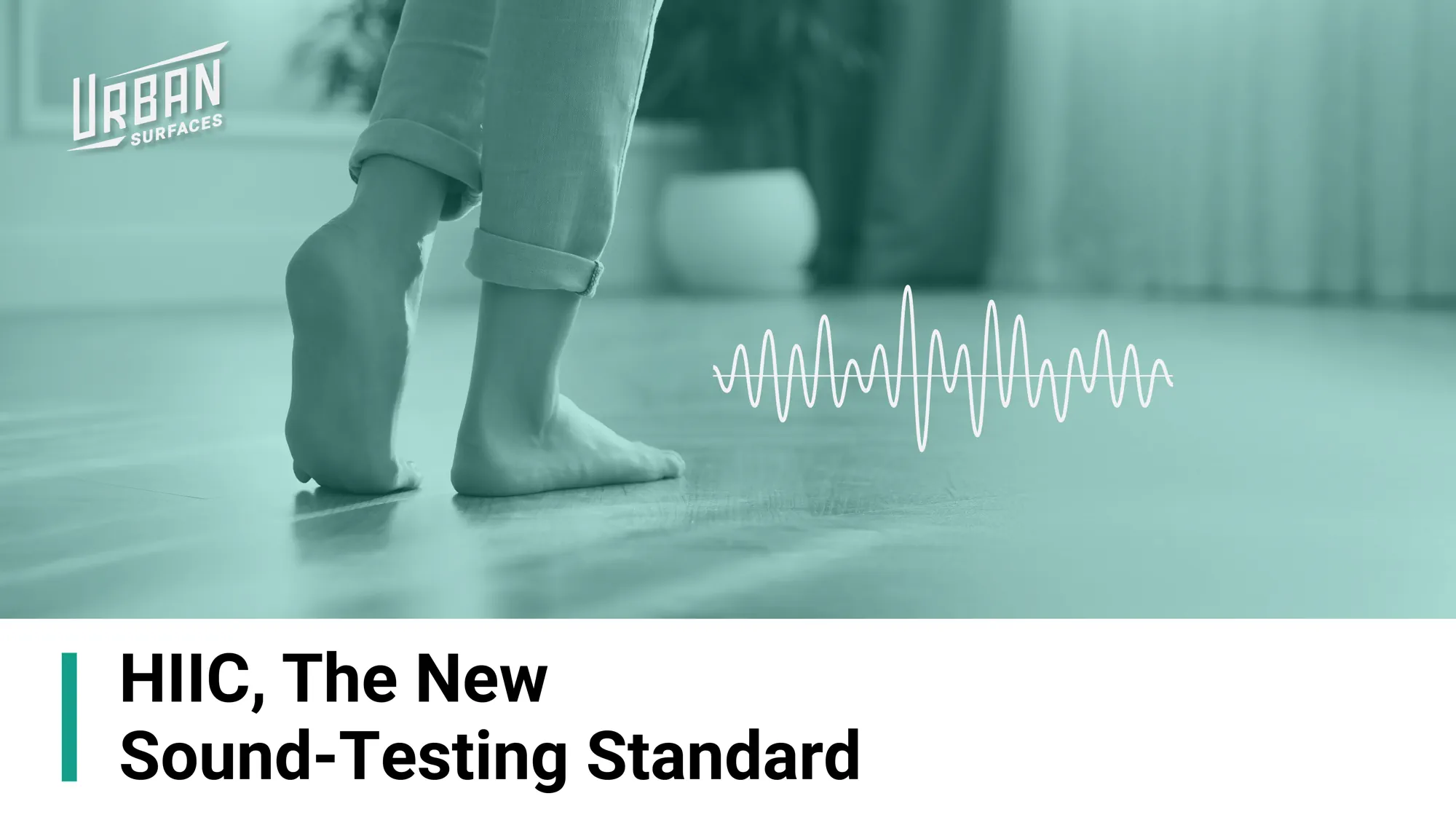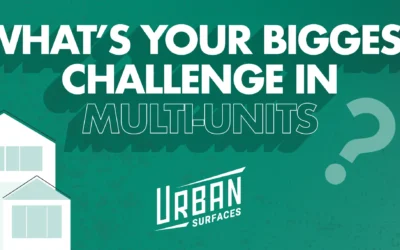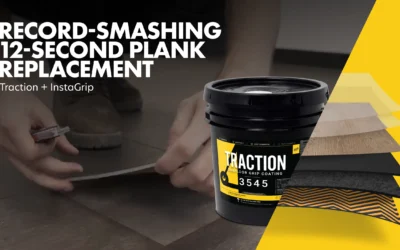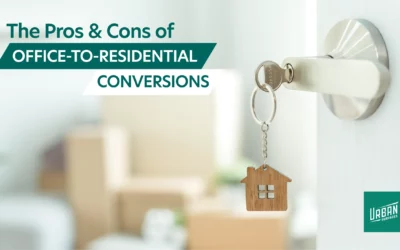It’s no secret that noise can be a major problem in multi-family homes. It can be a source of major frustration for property owners and tenants alike. That’s why millions of dollars and countless hours of scientific research and testing have been put into measuring and controlling sound.
Created in 1977, the IIC (Impact Insulation Class) has been the ASTM standard for measuring how impact sounds travel through flooring and ceiling assemblies. However, there’s a new industry standard taking its place, the HIIC or High-frequency Impact Insulation Class. This is now the Urban Surfaces standard and is being used to measure the sound-damping effects of all Urban Surfaces flooring and underlayments.
HIIC is an invaluable rating for the flooring industry, but to understand why, one first needs to understand how sound travels and is affected by surfaces.
How Sound Travels
Sound travels easily through the air in waves, causing a chain reaction of air particles vibrating and colliding. Sound rarely travels in just a straight line, and things get much more complex after hitting a surface. When sound impacts a surface, three things happen:
- Transmission: Some of it passes through.
- Absorption: Some is absorbed and becomes a tiny amount of heat.
- Reflection: Some bounces away.
While some sounds transferred through a surface may come from within a room, such as a TV or people talking, often the loudest sounds transferred are produced by direct impact with the surface, skipping the slight buffer that can be provided by air. These sounds can be caused by things such as pet claws, dropped objects, or even just footsteps.
How Sound is Measured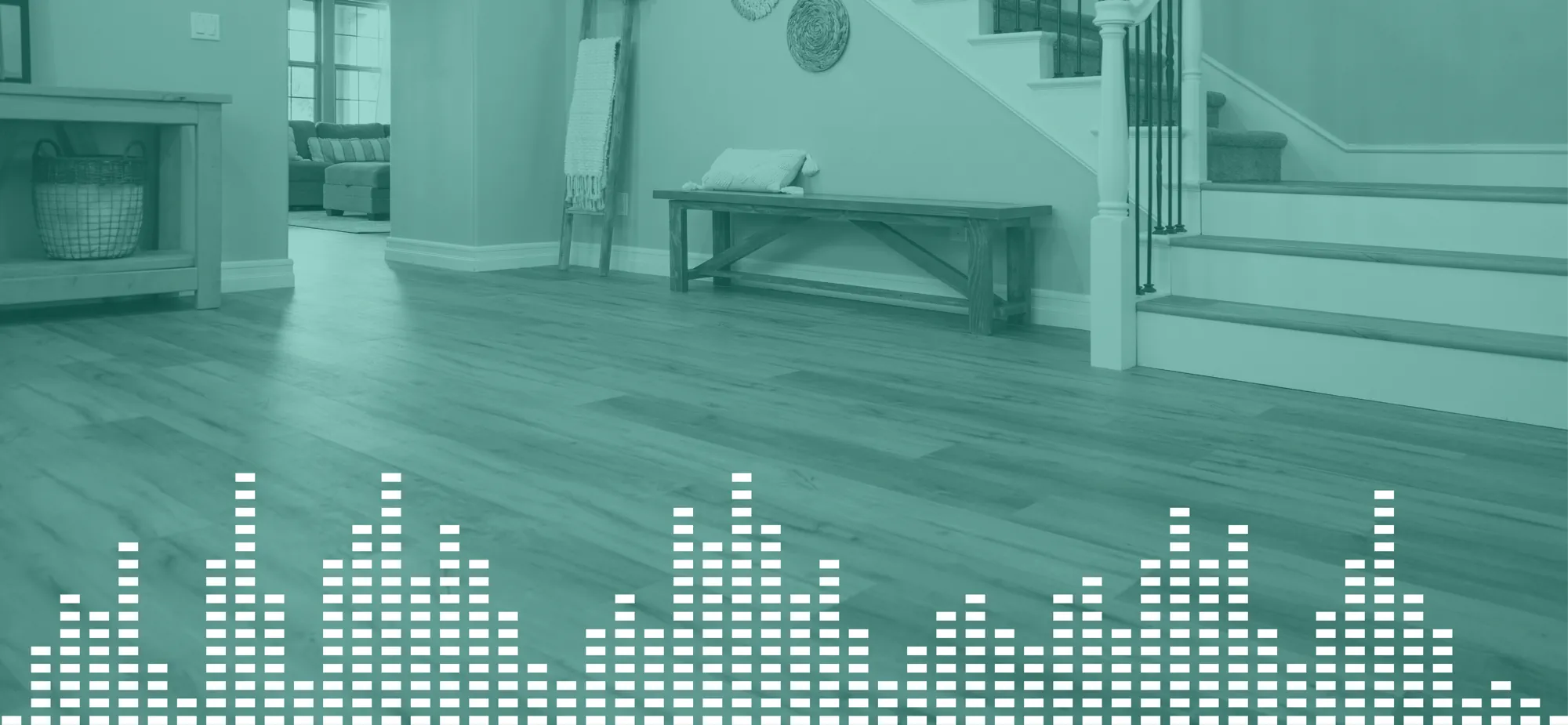
Urban Surfaces is proud to be partnered with the pioneers of audio measurement and control, Veneklasen Associates. They have done extensive testing on all of our flooring and underlayments, giving precise measurements of how well Urban Surfaces products reduce the travel of sound between the floors of a building.
Veneklasen Associates are responsible for not only furthering the science behind sound measurement via the IIC standard, but now they are the creators of new standards of measurement, the HIIC and LIIC.
While the IIC covers a single, limited range of sound, HIIC and LIIC separate out ranges of sound frequency as well as including frequencies not previously covered by IIC. HIIC covers a slightly reduced range of sound frequencies (from 400Hz to 3,150Hz) that can sometimes resemble clicks or taps, while LIIC covers an additional and lower range of sound frequencies (from 50Hz to 80Hz) that are more similar to thumps.
HIIC is most relevant to the kind of sound that can be lessened by good flooring and underlayments. This makes it very important to the flooring industry. Sounds in the LIIC range are minimally affected by flooring or underlayments and require other methods of sound damping within the floor-ceiling assembly.
While IIC, HIIC, and LIIC measure sounds created by impacts, there is also STC. This measures the reduction of sound that begins in a space, such as the aforementioned TV or people talking. These sounds are known as ambient or airborne sound. STC has been in use since 1973 and is also important to flooring sound reduction.
How Sound is Mitigated
There is no post-construction substitute for well-sound-isolated floor-ceiling assemblies, but there are several ways to still reduce noise transfer between levels.
Urban Surfaces Flooring
Perhaps the quickest and easiest way to reduce the amount of noise transferred from one level to another is to install one of Urban Surfaces’ many sound-damping flooring options such as Foundations Floating, Studio 12 Floating, InstaGrip, and all three Sound-Tec collections. These can all noticeably reduce sound transfer by varying amounts, all of which have been measured with precision by Veneklasen Associates.
Urban Surfaces’ FloorSilencer Underlayments
In addition to the sound reduction provided by much of Urban Surfaces’ flooring, we also have underlayments available that can further reduce sound traveling between floors. These underlayments are compatible with our flooring options of 4mm or thicker and add on to their existing sound reduction capability.
FloorSilencer Boost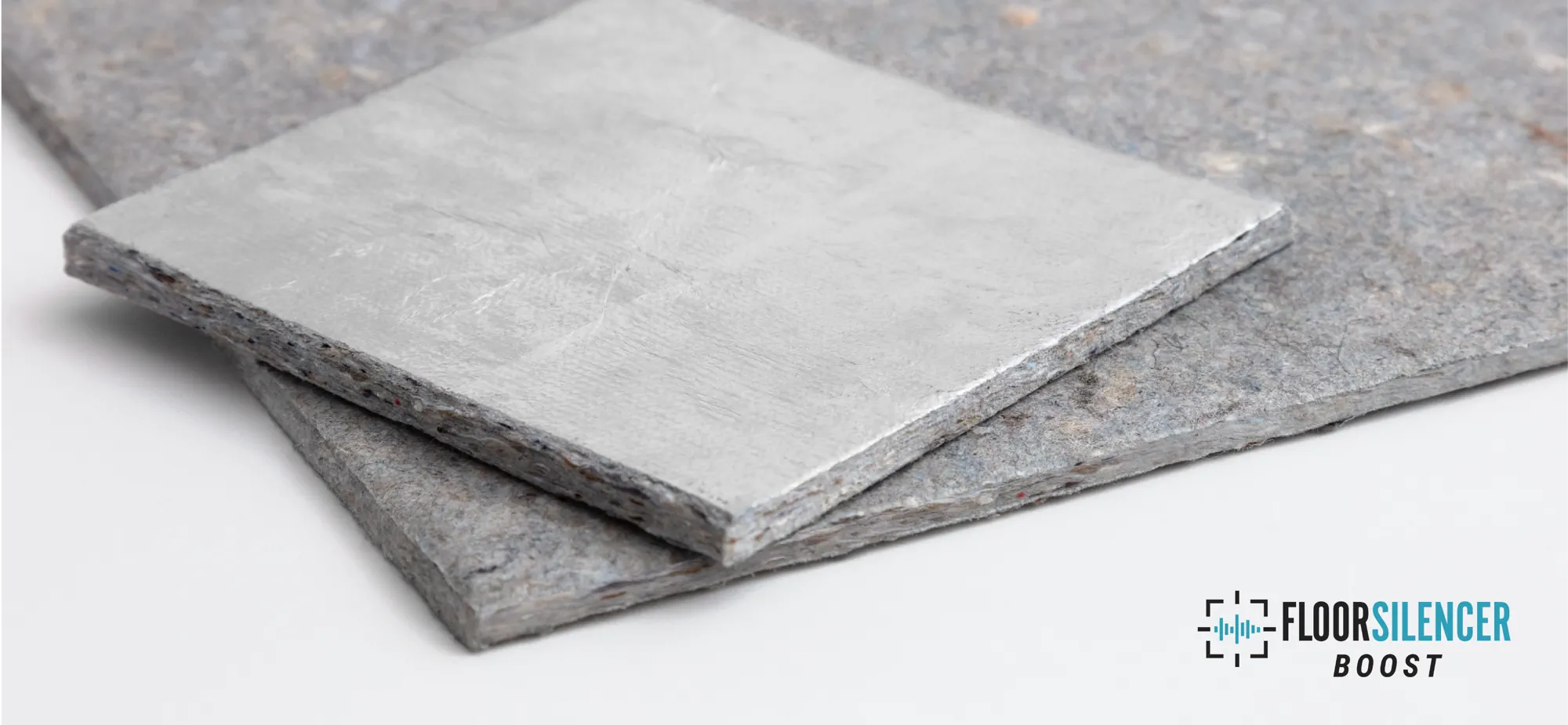
These fiberboards are made from a quality, eco-friendly recycled material and are a dense and durable solution to reduce sound while still being cuttable to shape. In addition, FloorSilencer Boost provides the benefits of thermal insulation, antimicrobial moisture protection, subfloors imperfection smoothing, and cushioning that reduces foot and leg fatigue without compromising floor-clip integrity.
FloorSilencer Flex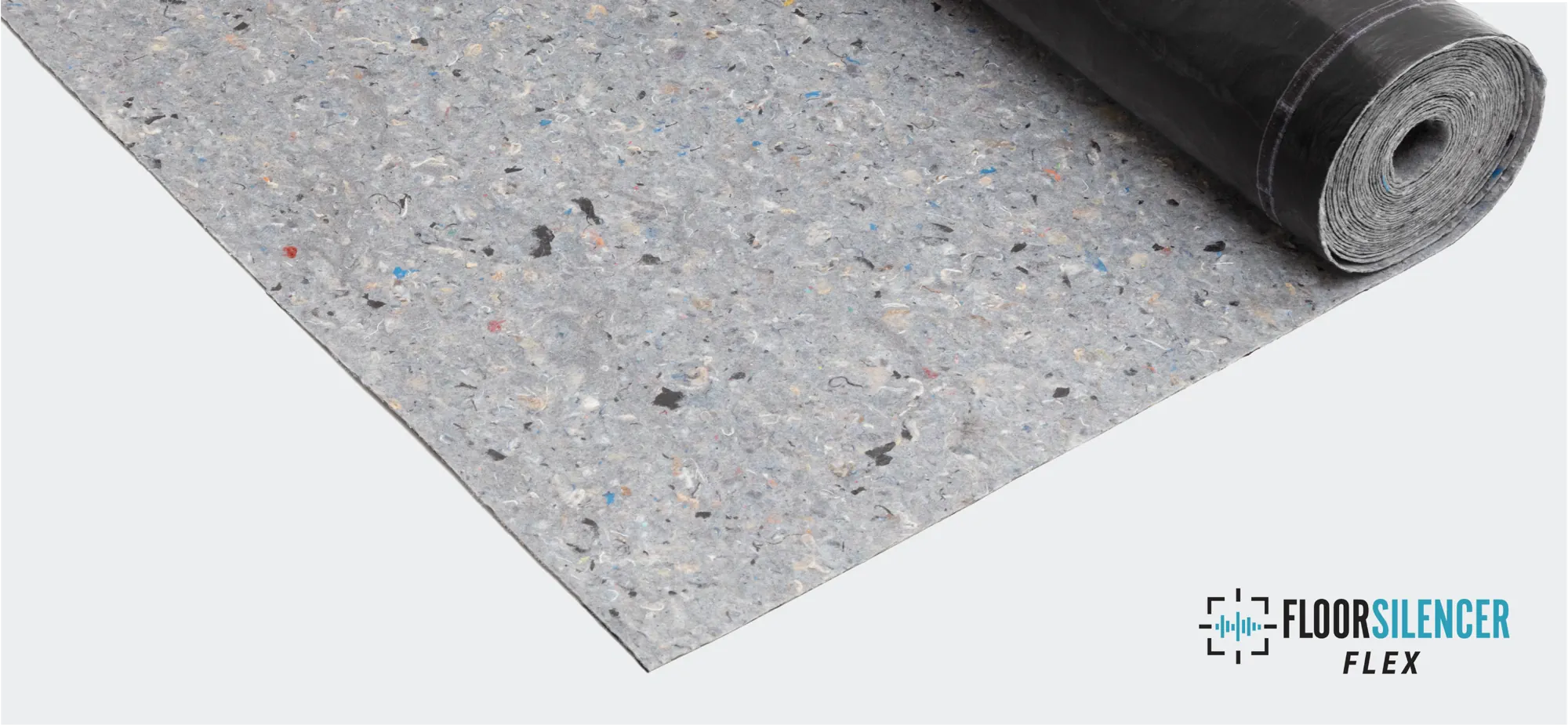
These rolls provide similar benefits when compared to FloorSilencer Boost (with the exception of cushioning) but have the advantage of being quick and easy to install. FloorSilencer Flex is performant and affordable.
Additional Techniques
Other techniques to reduce flooring sound transfer can cost significantly more time, money, and effort, but they still may be worth the costs depending on the severity of the noise issues. They also have the added benefit of improving sound damping in the LIIC range. Note that these options will only work when constructing or rebuilding ceiling and flooring assemblies.
- Insulation: Not only does insulation provide a barrier against heat loss, it also has a significant effect on sound reduction. Both fiberglass insulation and mineral wool insulation are effective.
- Floor Joist Isolators: These isolators work by providing a cushion between the subfloor and floor joists to reduce the vibrations transferred.
- Channels and Clips: Resilient channels (or hat channels with sound isolating clips) can be used similarly to floor joist isolators in that they provide a reduction in the vibrations transferred between ceiling joists and drywall.
- Layered Drywall With Adhesive: Adding two layers of ⅝” drywall adhered together with a noise-proofing compound can improve sound reduction by providing two sound barriers with an air gap between them.
Quieter, Quicker
To get a quieter space with minimal cost and effort, Urban Surfaces’ sound-damping flooring and underlayment options are the way to go. Urban Surfaces is at the forefront of sound-reducing flooring technology, and we welcome the new HIIC standard, as it will help us to remain on the cutting edge.
We are happy to answer questions you may have about sound testing, noise solutions, or anything else. Contact your Urban Surfaces representative today for a no-commitment consultation. Don’t have a representative yet? Call 800-492-8722, and we’ll introduce you.

- The Advantages of Standardizing Your Flooring Specs With Urban Surfaces - February 12, 2025
- Urban Surfaces: Your Partner in Solving Multifamily Flooring Challenges - January 3, 2025
- Record-Smashing 12-Second Floor Plank Replacement With Traction + InstaGrip - September 26, 2024
